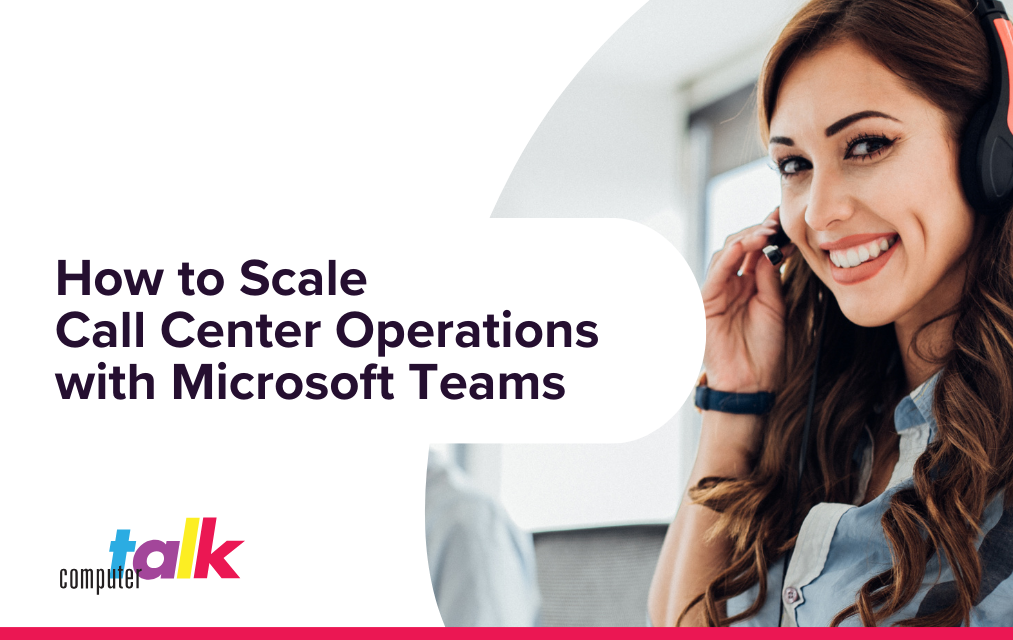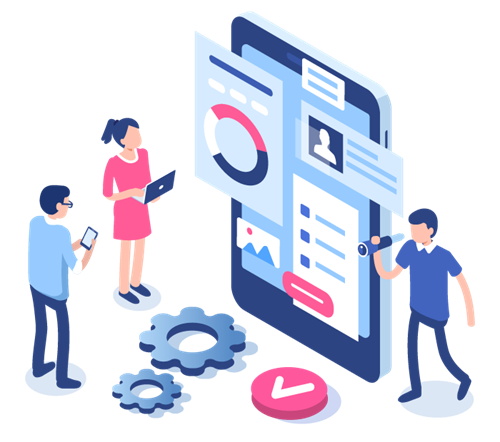Outbound Lead Generation: The Ultimate Guide to Driving More Sales
by Anastasia Micic | Published On April 28, 2025 | Last Updated June 11, 2025

Boost your sales with outbound lead generation! Learn best practices, common mistakes to avoid, and how cutting-edge technology can streamline your outreach in this guide.
Modern contact centers aren’t focused exclusively on handling inbound inquiries or tackling customer issues. Many also handle the complex task of outreach – proactively connecting with clients, nurturing prospects, and potentially even managing sales.
For these contact centers, a strategic approach to outbound lead generation is essential to increasing brand awareness, connecting to new markets, and ultimately boosting sales and revenue.
But the nature of outbound lead generation, particularly in the contact center, is constantly evolving. To succeed in today’s world, companies can’t just ask team members to make endless cold calls. They need to think carefully about how they’re going to identify the right leads to contact, reach out at the best times, and pave the way for strong, long-lasting relationships.
In this guide, we’ll introduce you to everything you need to know about the basics of effective outbound lead generation, and the best practices you can use to power bigger profits.
What is Outbound Lead Generation?
In general, “lead generation” is the process of identifying and cultivating potential customers for your company’s products or services. Outbound lead generation involves finding and proactively reaching out to members of your target audience to drive interest in whatever you have to offer. That differentiates it from “inbound lead generation,” which focuses on using content to attract customers to your brand.
In the context of the contact center, outbound lead generation campaigns often involve multiple steps, including:
- Identifying Target Audiences: Define the ideal customer profile based on factors like industry, company size, and decision-making authority
- Prospecting: Gather contact information of potential leads through various means such as LinkedIn profiles.
- Qualification: Assess leads to determine their readiness to move forward in the sales process, based on their intent or budget.
- Outreach: Engage with prospects via channels like cold calling, email campaigns, or direct mail to introduce your offerings.
- Follow-Up: Maintain communication with interested leads, addressing their questions and concerns to nurture the relationship.
Employees focused on outbound lead generation generally categorize prospects into different groups, to help them determine exactly who they should be connecting with, when, and what they should be saying during initial calls.
For instance, teams connecting with “MQLs” (Marketing Qualified Leads), would usually focus on building awareness of a product’s benefits, and nurturing customers through the sales cycle. That’s because MQLs might have interacted with marketing materials (such as by clicking on a link), but they typically haven’t shown that they have the desire to buy a product or service yet.
Alternatively, team members focusing on SQLs (Sales Qualified Leads) will be more focused on converting leads into customers. Sales qualified leads are often easier to convert, because they’ve already shown that they have the intent to purchase something.
Outbound vs. Inbound Lead Generation: Key Differences
Ultimately, both inbound and outbound lead generation focus on filling sales pipelines. The main difference is in who makes “initial contact” in a conversation. With inbound lead generation, you attract customers to your business through valuable content and experiences, encouraging them to contact your sales team or company directly when they’re interested in a product.
With outbound lead generation, the ball is in your court. Your team identifies people who might be interested in your products or services and contacts them, generally trying to arrange an initial consultation, a demo, or a conversation with a sales representative.
Here’s a quick look at the major differences between inbound and outbound strategies:
Aspect | Inbound Lead Generation | Outbound Lead Generation |
Approach | Attracts leads through valuable content and organic engagement. | Requires employees to proactively reach out to potential customers. |
Cost | Generally more cost-effective over time, with a focus on content creation and SEO. | Often involves higher upfront costs due to advertising and direct outreach efforts. |
Lead Quality | Tends to attract a smaller number of high-quality leads. | Can attract a higher number of leads – though their quality depends on prospecting and qualification strategies. |
Timeframe | Requires time to build momentum and see results, as it depends on content creation and organic traffic growth. | Can generate immediate leads, making it suitable for short-term campaigns and quick wins. |
Technology Required | Marketing tools, content creation solutions, and analytics. | Contact center solutions, dialling systems, analytics, and reporting tools. |
Benefits of Outbound Lead Generation
Outbound lead generation sometimes gets a bad reputation. It’s often associated with companies making annoying calls to customers at all times of the day and night – trying to push them into a purchase. But outbound lead generation can be an incredible way to boost your company’s profits and strengthen relationships with customers.
If you take the right approach to contacting the right customers, at the correct times, with the most valuable information and insights, you can unlock great results.
Three of the most significant benefits of outbound lead generation include:
Increased Customer Engagement
Consistent outbound efforts ensure that your brand reaches a wider audience, enhancing recognition and recall. Even if prospects aren't immediately interested in whatever you’re selling, repeated exposure through outbound campaigns keeps your brand top-of-mind for future consideration. This increased visibility can lead to higher engagement rates over time.
Faster Sales Cycles
By proactively reaching out to potential customers, outbound lead generation can shorten the sales cycle. This approach allows businesses to target leads who are ready to make a purchase, reducing the time spent on prospecting and qualification.
Outbound strategies, such as cold calling and targeted email campaigns, can also yield quick outcomes. Unlike inbound methods that may take time to attract prospects, outbound tactics enable businesses to directly engage with potential customers, leading to faster conversions.
Valuable Market Insights
Direct interactions with prospects offer immediate feedback, allowing businesses to gather insights into customer needs, preferences, and pain points. This information is invaluable for refining products, services, and marketing strategies to better align with market demands.
The more data you collect from your outbound strategies, the more you can increase decision-making agility and enhance processes throughout your organization.
Best Practices for Outbound Lead Generation
While outbound lead generation strategies can be incredibly beneficial to businesses, they also need to be implemented with care. Take the wrong approach, and you could end up wasting endless time and resources on an inefficient, ineffective process. Here are our top tips for success:
1. Invest in Auto Dialers
Outbound sales and marketing teams can waste a lot of time just entering numbers into a keypad. Automated dialing systems take efficiency to the next level. These systems automatically dial numbers from a predefined list, connecting agents only when a call is answered, reducing idle time. Predictive dialers can even use algorithms to anticipate agent availability and adjust dialing rates accordingly.
2. Explore Outbound Notifications
Outbound notifications are a great way to make your outbound lead generation and nurturing strategies more proactive. You can automatically send information to customers through various channels, keeping them informed about updates, promotions, or important alerts. Plus, proactive notifications can cut costs and improve sales. For example, automated appointment reminders via SMS can reduce no-show rates, while promotional emails can boost sales during special events.
3. Integrate a CRM
The best outbound lead generation efforts are targeted and personalized. A robust CRM system makes it easier for your team members to connect with potential customers on a deeper level. It gives staff access to customer data, engagement history, and insights into their potential product preferences, so they can promote and pitch the right solutions. CRMs can even help your agents choose the right times to contact leads, or engage in follow-ups, based on insights into their availability.
4. Tap Your IVR System
Interactive Voice Response systems don’t just have to be for customer service. In outbound lead generation, an IVR can help you qualify leads before they’re connected to agents, asking them questions about their needs, preferences, and pain points. You can even use your IVR system to send automated phone messages to customers about products, deals, and offers. That saves your team members a lot of time and effort handling calls manually.
5. Experiment with SMS and Email
Leveraging SMS and email campaigns is a cost-effective way to reach a broad audience. With open rates of up to 98% for SMS, these channels are effective for delivering timely messages. Automated tools also allow you to schedule and personalize messages, which is great for boosting engagement rates. Combine SMS and email with outbound calls to boost your omnichannel lead generation strategy.
6. Embrace Referrals and Partnerships
Need help reaching a broader audience of potential leads? Referral programs and partnerships can work wonders. Encouraging satisfied customers to refer other people to your organization or collaborating with complementary businesses opens new avenues for quick lead generation. You might even find referrals and customers recommended by partners are more likely to trust your organization.
7. Host Webinars and Events
Hosting webinars and events is a great way to combine inbound and outbound lead generation strategies. Events give you a chance to capture contact details from customers who might be interested in your products and services, so you can contact them later. Plus, they’re a great way to showcase your expertise, and potentially convince customers to reach out to your sales team directly.
Common Mistakes to Avoid with Outbound Lead Generation
One of the main reasons outbound lead generation still has a bad reputation (in some circles), is that many companies continue to make the same mistakes when investing in outreaches. Here are some of the top mistakes you’ll need to avoid if you want to boost your chances of success:
1. Using Generic, Impersonal Messaging
No customer wants to feel like just another number on a list. Sending out generic messages without making any effort to “personalize” the experience for your customers just increases the chances that your outreach efforts will be ignored.
Even small steps, like adding a customer’s name to an email, or referencing specific products they might be interested in based on previous interactions, can significantly increase your chances of conversions, and improve your relationships with customers. Do your research before connecting with a prospect, and make sure you personalize every conversation.
2. Not Defining Target Audience and User
Even in today’s world, some companies still make the mistake of focusing on quantity over quality when it comes to lead generation. They assume that they should be trying to connect with as many potential customers as possible. However, taking this broad approach simply means you’re more likely to waste time connecting with customers who are never going to buy anything from you.
Developing detailed buyer personas that include demographics, industry, company size, pain points, and decision-making processes will ensure you can strategically target and qualify the right leads. That means you’ll benefit from higher conversion rates and lower operational costs.
3. Being Too Salesy and Pushy
Customers hate getting unexpected sales calls from people who simply won’t take “no” for an answer. Not only will constantly trying to push customers to make a purchase boost the chances that they’ll just hang up on you, but it could have a negative impact on your entire company’s reputation.
Remember, prospects are more receptive to calls from salespeople who genuinely seem to have their best interests at heart. Train your outreach experts to deliver value in every conversation, and focus on solving customer problems, rather than just trying to get a sale.
4. Neglecting Follow-Ups and Nurturing
Even if you carefully research and qualify every outbound lead you contact, there’s a good chance not all of your customers will convert the first time you contact them. That’s why it’s so important to follow up. After an initial call, if a prospect shows interest but isn’t ready to make a purchase, make a note in your CRM system to follow-up later.
Remember, it takes up to five sales calls to convert a lead. If you’re giving up after the first attempt, then you could be missing out on the majority of your conversions.
5. Ignoring Data and Not Measuring Results
Finally, you can’t improve what you don’t measure. If you’re not analyzing the results of your outbound campaigns, you don’t know which strategies are really working. Ignoring metrics means you’re overlooking repeated mistakes and opportunities for optimization.
With that in mind, regularly track key performance indicators, from open rates, response rates, and answer rates, to conversion rates and customer satisfaction scores. Use this data to refine your strategies continually. A/B testing different messaging approaches can also provide insights into what resonates best with your audience.
Optimize Your Outbound Lead Generation Strategy
Investing in outbound lead generation is an incredible way to increase customer engagement, unlock new sales opportunities, and ultimately increase business growth.
The key to success is making sure you approach this process cautiously, with a focus on the right strategies, and access to the most intuitive technology. A combination of the right steps, and technology that allows you to automate repetitive tasks, personalize interactions, and enhance customer experiences, will optimize your return on investment.
Ready to get started? ComputerTalk’s comprehensive outbound tools are designed to streamline your outreach efforts and maximize results. With features tailored to modern sales strategies, our solutions can help you connect with the right prospects at the right time. Don't wait for opportunities to come to you- seize them proactively. Book a demo today and discover how ComputerTalk can elevate your lead generation strategy.
More from our blog
 Let’s talk about what’s happening inside a typical education contact center right now.
Let’s talk about what’s happening inside a typical education contact center right now.
 Learn how Microsoft Teams integration empowers call centers to scale efficiently, ensuring seamless operations and exceptional customer experiences.
Learn how Microsoft Teams integration empowers call centers to scale efficiently, ensuring seamless operations and exceptional customer experiences.
 Traditionally, manufacturing companies have focused on creating cost-effective production processes to compete in the global marketplace. However, in today's competitive environment, price alone is no longer a sufficient differentiator. To thrive, manufacturers must focus on delivering superior client experiences.
Traditionally, manufacturing companies have focused on creating cost-effective production processes to compete in the global marketplace. However, in today's competitive environment, price alone is no longer a sufficient differentiator. To thrive, manufacturers must focus on delivering superior client experiences.

